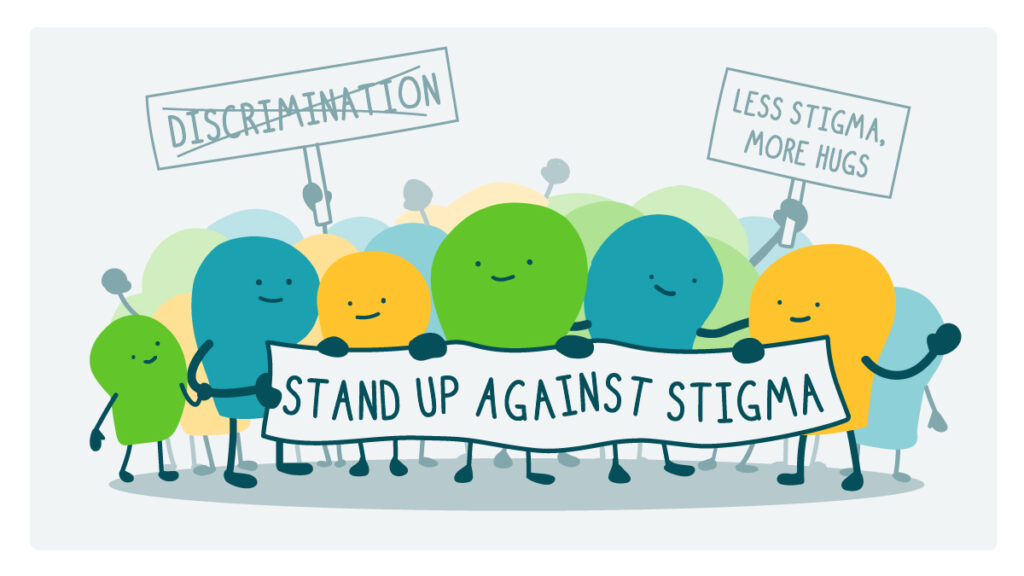
Here at We ♥️ Health Literacy HQ, we’re always looking for ways to actively counter stigma when we’re writing about highly stigmatized topics. Stigma and discrimination against already-marginalized groups of people are especially widespread right now — but the substance of it isn’t new. People living with HIV have been fighting harmful stereotypes and discrimination since the AIDS epidemic began in the early ’80s. That’s almost 45 years!
So, what can we as health communicators do to take a stand against stigma while still communicating important messages to help keep our audiences safe and healthy? We’ve got a few ideas for you:
- Focus on behaviors, not identities. Consider a sentence like, ”Gay men are at higher risk for HIV.” Without context, this statement doesn’t capture the whole picture. Many gay men aren’t at risk for HIV at all, and many other people are at risk. So be sure to explain the behaviors that raise people’s risk (like having condomless sex with someone who doesn’t know their HIV status or sharing equipment for injecting drugs) — and leave identity out of the equation.
- Clearly explain the steps people can take to keep HIV from spreading. For example, people who don’t have HIV but have sexual partners who do can take PrEP (pre-exposure prophylaxis) or use condoms. And taking antiretroviral therapy (ART) can help people with HIV stay healthy and avoid giving HIV to anyone else. More knowledge = healthier people and less stigma — so tell your audiences what they can do to stay safe and healthy.
- Use positive framing. No doubt about it, HIV is a serious condition. But these days, it’s very possible to live a long, healthy life with HIV — and to keep the disease from spreading (see above). Tell your audiences so! This kind of positive framing not only empowers people with HIV but also helps everyone recognize that people with HIV are just… people, going about their lives like anyone else.
- Use language thoughtfully. As always, choosing words that help people feel seen and accepted goes a long way toward countering stigma and stereotypes. This can include using people-first language (think “people with HIV” rather than “HIV patients”), taking care to get people’s pronouns right, and avoiding terms like “clean” to describe HIV test results. Pay attention to the terms that folks with HIV and the organizations that serve them are using — and, of course, test your materials with your audience whenever you can!
- Choose images carefully. Just like the words we use, images can help us counter stigma. But they can also perpetuate it. Be mindful of this when you’re choosing images for your HIV materials. While choosing a specific group of people as your priority audience is a good idea, keep in mind that if you’re only showing a specific group (say, gay men) or a specific subset of that group (like gay men of only 1 race, skin tone, age, or body type) in your HIV materials, the final result might accidentally reinforce stereotypes about who gets HIV.
The bottom line: Anti-HIV stigma is widespread and harmful. Making intentional choices about terminology, framing, images, and more in your HIV communications can help counter that stigma and empower your audiences.
Copy/paste to share on social (and tag us!): Get out in front of harmful anti-HIV stigma and stereotypes with CommunicateHealth’s HIV communication tips: https://communicatehealth.com/wehearthealthliteracy/health-comm-for-the-current-moment-countering-hiv-stigma/ #HealthComm #HealthCommunication
Browse recent posts